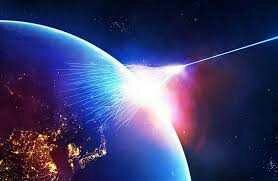Cosmic rays are atom fragments that rain down on the Earth from outside of the solar system. They blaze at the speed of light and have been blamed for electronics problems in satellites and other machinery. Discovered in 1912, many things about cosmic rays remain a mystery more than a century later. One prime example is exactly where they are coming from. Most scientists suspect their origins are related to supernovas (star explosions), but the challenge is that for many years cosmic ray origins appeared uniform to observatories examining the entire sky. A large leap forward in cosmic ray science came in 2017, when the Pierre Auger Observatory (which is spread over 3,000 square kilometers, or 1,160 square miles, in western Argentina)studied the arrival trajectories of 30,000 cosmic particles. It concluded that there is a difference in how frequently these cosmic rays arrive, depending on where you look. While their origins are still nebulous, knowing where to look is the first step in learning where they came from, the researchers said. The results were published in Science. Cosmic rays can even be used for applications outside of astronomy. In November 2017, a research team discovered a possible void in theGreat Pyramid of Giza, which was built around 2560 B.C.,using cosmic rays. The researchers found this cavity using muon tomography, which examines cosmic rays and their penetrations through solid objects. While cosmic rays were only discovered in the 1900s, scientists knew something mysteriouswas going on as early as the 1780s. That's when French physicist Charles-Augustin de Coulomb — best known for having a unit of electrical charge named after him — observed an electrically charged spheresuddenly and mysteriously not being charged any more.At the time, air was thought to be an insulator and not an electric conductor. With more work, however, scientists discovered that air can conduct electricity if its molecules are charged or ionized. This would most commonly happen when the molecules interact with charged particles or X-rays. But where these charged particles came from was a mystery; even attempts to block the charge with large amounts of lead were coming up empty. On Aug. 7, 1912, physicist Victor Hess flew a high-altitude balloon to 17,400 feet (5,300 meters). He discovered threetimes more ionizing radiation there than on the ground, which meant the radiation had tobe coming from outer space. But tracing cosmic ray "origin stories" took more than a century. In 2013, NASA's Fermi Gamma-ray Space Telescope released results fromobserving two supernova remnants in the Milky Way: IC 433 and W44. Among the products of these star explosions are gamma-ray photons, which (unlike cosmic rays) are not affected by magnetic fields. The gamma-rays studied had the same energy signature as subatomic particles called neutral pions. Pions are produced when protons get stuck in a magnetic field inside theshockwave of the supernova and crash into each other.In other words, the matching energy signatures showed that protons could move at  fast enough speeds within supernovas to create cosmic rays.
fast enough speeds within supernovas to create cosmic rays.
Hi! I am a robot. I just upvoted you! I found similar content that readers might be interested in:
https://www.space.com/32644-cosmic-rays.html